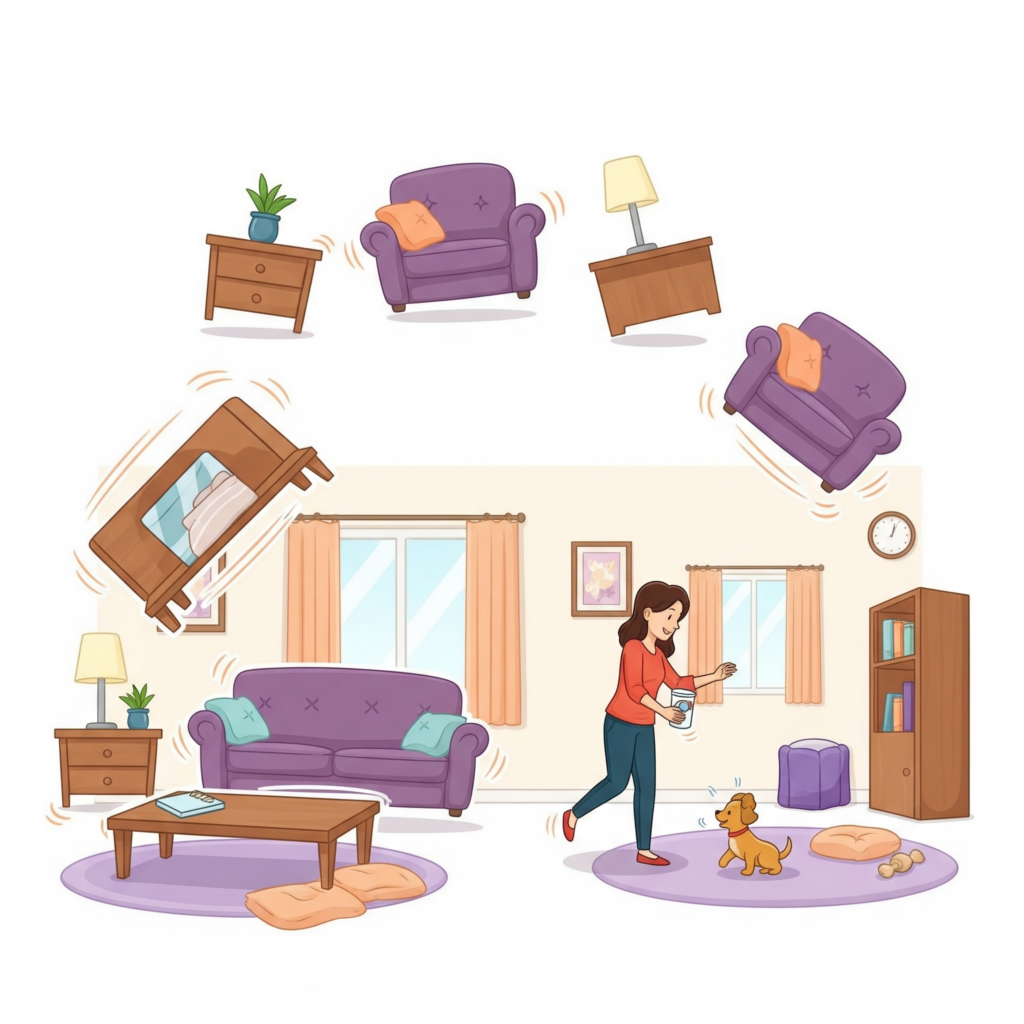
As your puppy grows, your living room plays a major role in their development, comfort, and safety. It’s not just a space for humans to relax—it becomes a place for play, rest, exploration, and bonding. Rearranging this shared space can support your puppy’s growth while keeping your home functional and welcoming.
Start with a Safe Layout
Puppies are naturally curious and will explore everything within reach. Begin by scanning your living room for hazards—sharp table corners, exposed cords, small objects, or low-hanging decorations. Move furniture to create clear walkways and remove anything fragile or toxic. Consider blocking access to tight corners or furniture bases where your puppy might get stuck.
Designate a Puppy Zone
As your puppy begins to move around more, it helps to create a dedicated zone just for them. This can be a soft rug, a playpen, or a crate with a cozy bed inside. Place a few toys and a water bowl nearby to give your puppy a sense of independence while staying within sight. Over time, this zone becomes their safe spot to return to when tired or overstimulated.
Balance Space for Movement and Rest
Your growing puppy needs both stimulation and calm. Make sure the space allows for short play sessions with room to move, but also includes a quiet corner for rest. Rearranging bulky furniture to the walls can free up more floor space. Use soft mats or washable rugs to protect your flooring and provide a comfortable surface for your puppy to lie on.
Secure All Cables and Electronics
Living rooms often contain entertainment systems, lamps, and charging cords. As your puppy grows, they’ll start chewing and tugging at anything dangling or within reach. Use cord protectors, secure outlets with covers, and keep electronics on elevated surfaces to reduce risk. Keeping devices out of reach can save you from both danger and damage.
Reconsider Decorative Items
Low bookshelves, coffee tables, and open bins often hold items that might tempt a curious puppy. Shift plants, candles, remotes, and small décor to higher shelves. If your furniture has open shelving, consider using baskets or fabric bins with lids to protect items and prevent accidents.
Use Furniture as Natural Barriers
Couches, ottomans, and bookshelves can be positioned to block off no-go zones like stairs or certain rooms. This allows your puppy to enjoy part of the living room while you keep other spaces off-limits. Just make sure any barrier is stable and not easy for a growing pup to move or knock over.
Monitor and Adjust Over Time
As your puppy continues to grow, their needs will change. They may start jumping on furniture, exploring new heights, or chewing with more strength. Pay attention to new behaviors and adjust the room layout as needed. What worked when they were eight weeks old may not suit them at five months.
Final Thought
Creating a living room that works for both your puppy and your lifestyle is all about balance. With a few intentional changes, you can support your puppy’s growth while keeping your home neat, safe, and peaceful. At PetsDogPuppy, we believe a thoughtful environment makes all the difference in raising a happy, well-adjusted companion. PetsDogPuppy
